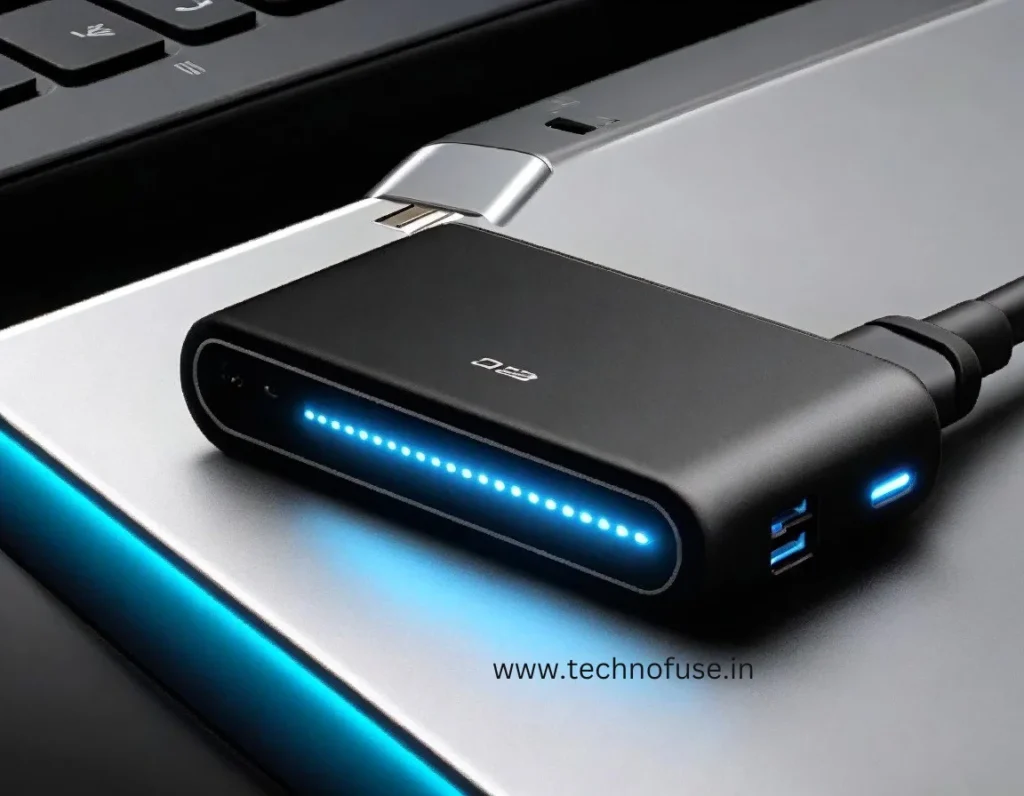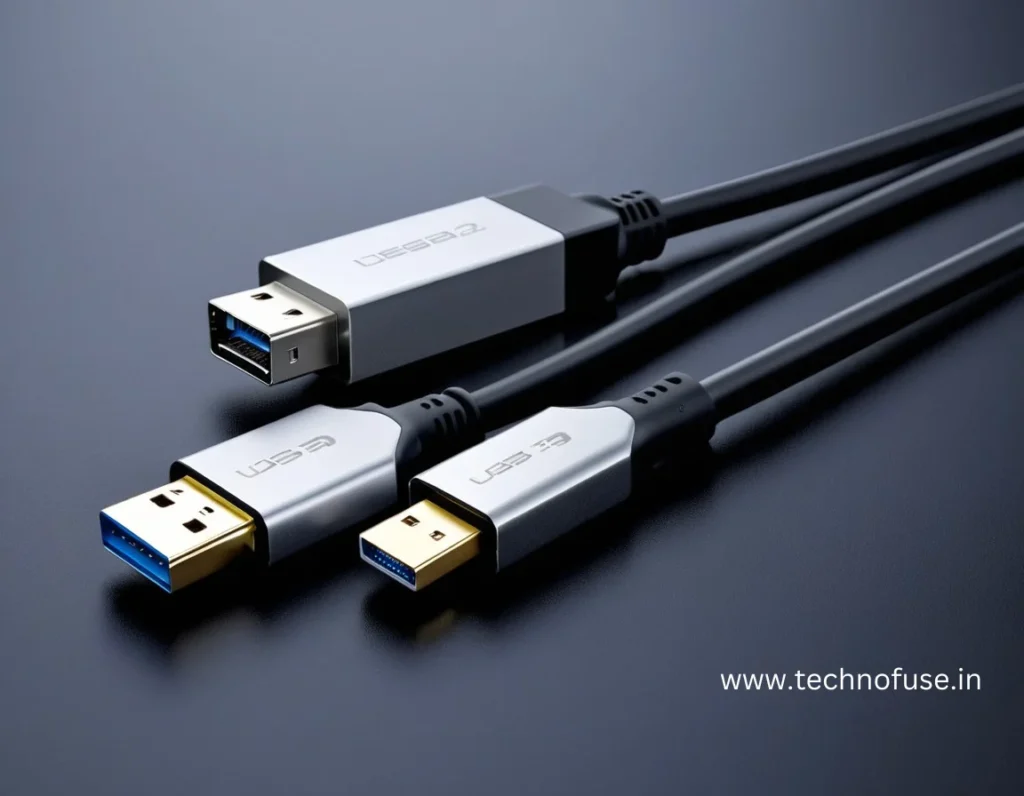
What is USB 3.2?
USB 3.2 is a standard for Universal Serial Bus (USB) technology that defines faster data transfer speeds and improved performance. It builds upon earlier USB versions combining their features while simplifying the naming system.USB 3.2 Gen 1 vs Gen 2
USB 3.2 Gen 1
was at first branded as USB 3.2 Gen 1 refers to the original USB 3.0 offering speeds up to 5Gbps. It underpins information exchange USB 3.2 gen 1 speed up to 5 Gbps, which is adequate for most regular assignments. In any case, this rendition is normal discovered in an extensive variety of gadgets, from outer hard drives to workstations.USB 3.2 Gen 2
beforehand known as USB 3.2 Gen 2 refers to the former USB 3.1 Gen 2, with speeds up to 10Gbps. This expanded speed makes USB 3.2 Gen 2 ideal for applications requiring remarkable information transfer for example, transmitting enormous recreations documents or 4K/8K video records quickly. While backward good with past norms USB 3.2 Gen 2 highlights cutting edge execution expected to bolster future innovations.USB 3.2 Gen 1 vs Gen 2 connector
 The USB 3.2 Type-C connector represents a significant advancement in USB technology. Unlike its predecessors, the Type-C connector is reversible, which means it can be plugged in either way. This feature, combined with its compact size, makes it a versatile and user-friendly option.
USB 3.2 Gen 1 Type-C supports speeds up to 5 Gbps and is capable of handling various functions, including data transfer and power delivery. However, USB 3.2 Gen 2 Type-C takes this further by supporting higher speeds of up to 10 Gbps and enhanced power delivery capabilities.
The USB 3.2 Type-C connector represents a significant advancement in USB technology. Unlike its predecessors, the Type-C connector is reversible, which means it can be plugged in either way. This feature, combined with its compact size, makes it a versatile and user-friendly option.
USB 3.2 Gen 1 Type-C supports speeds up to 5 Gbps and is capable of handling various functions, including data transfer and power delivery. However, USB 3.2 Gen 2 Type-C takes this further by supporting higher speeds of up to 10 Gbps and enhanced power delivery capabilities.
USB 3.2 Gen 2 Speed and Power Output
USB 3.2 gen 1 and gen 2 speed is one of its most significant features. With a maximum transfer rate of 10 Gbps, it doubles the speed of USB 3.2 Gen 1. This speed is particularly beneficial for tasks that require rapid data transfer, such as editing high-resolution videos or transferring large datasets. In terms of USB 3.2 Gen 2 power output, this standard supports up to 100 watts of power delivery. This capability allows it to USB 3.2 gen 1 & gen 2 charging high-power devices, such as laptops and other power-hungry gadgets, making it a highly versatile option for both data and power needs.USB 3.2 Gen 2 Flash Drives
USB 3.2 Gen 2 Flash Drives are designed to take full advantage of the increased speeds offered by the USB 3.2 Gen 2 standard. These flash drives offer transfer rates up to 10 Gbps, making them ideal for quickly moving large files or backing up substantial amounts of data. When using a USB 3.2 Gen 2 flash drive, ensure that both your computer and the flash drive support USB 3.2 Gen 2 to fully utilize its speed capabilities.USB 3.2 Gen 1 Type-C Support Display
USB 3.2 Gen 1 Type-C support display allows the USB Type-C connector to handle video output to external monitors. This feature is particularly useful for those who want to connect their laptop to a larger display for presentations or multimedia viewing. However, it’s essential to verify that your specific USB Type-C port supports video output, as not all Type-C ports have this capability.Comparing USB 3.2 Gen 1 and Gen 2
Here’s a side-by-side comparison to clarify the differences between USB 3.2 Gen 1 and Gen 2:- Speed: USB 3.2 Gen 1 supports speeds up to 5 Gbps, while USB 3.2 Gen 2 offers up to 10 Gbps.
- Power Delivery: USB 3.2 Gen 2 can deliver up to 100 watts of power, which is significantly higher than the power output of USB 3.2 Gen 1.
- Type-C Connector: Both generations use the USB Type-C connector, but their performance depends on whether the port and device support USB 3.2 Gen 1 or Gen 2.
Conclusion
USB 3.2 is a significant step in connectivity. It provides speed, power delivery and flexibility that are superior to its predecessor, USB 3.2. By understanding the differences between USD 3.2 gen 1 vs gen 2, and by knowing what USB Type-C are capable of doing, you can make a more informed decision on your technology needs. Whether you’re upgrading your equipment to meet the new specifications or buying a new batch of accessories, this guide will give you an easy-to-understand introduction into the most advanced field of USB technology.FAQ
1. What devices are compatible with USB 3.2 Gen 2?
USB 3.2 Gen 2 is compatible with a variety of modern devices, including high-end laptops, external hard drives, and flash drives. Ensure that your device and cable are both USB 3.2 Gen 2 compliant to take advantage of the faster speeds and higher power delivery.
2. Can I use a USB 3.2 Gen 2 device with a USB 3.2 Gen 1 port?
Yes, USB 3.2 Gen 2 devices are backward compatible with USB 3.2 Gen 1 ports. However, the device will operate at the lower speed of the Gen 1 port, which is up to 5 Gbps.
3. How can I determine if my device supports USB 3.2 Gen 2?
Check the specifications of your device or look for the USB 3.2 Gen 2 logo on the port. Many modern devices and accessories are labeled to indicate their USB standard compatibility.
4. Are all USB Type-C ports the same?
No, USB Type-C ports can support various standards, including USB 3.2 Gen 1, Gen 2, or even USB 4. The capabilities of a Type-C port depend on the specific USB standard it adheres to. Always check the specifications of your devices to understand the full range of features supported by the port.
5. What should I look for when buying a USB 3.2 Gen 2 Flash Drive?
When purchasing a USB 3.2 Gen 2 flash drive, consider the drive’s transfer speed, storage capacity, and compatibility with your devices. Ensure that both the flash drive and the devices you plan to use it with support USB 3.2 Gen 2 to fully benefit from its high-speed capabilities.
